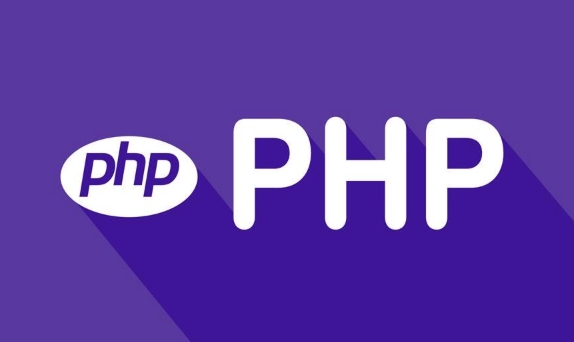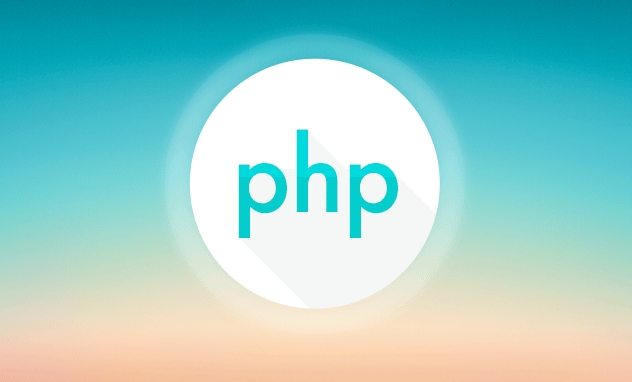 Backend Development
Backend Development
 PHP Tutorial
PHP Tutorial
 From installation to operation: A complete guide to PHP development environments
From installation to operation: A complete guide to PHP development environments
From installation to operation: A complete guide to PHP development environments
Jun 29, 2025 am 01:39 AMTo set up a PHP development environment, choose a stack like XAMPP for simplicity or Docker for consistency, install PHP and configure php.ini, set up a local server with virtual hosts, and include essential tools like Xdebug, Composer, and Git. Begin by selecting a development stack: XAMPP is beginner-friendly, Docker ensures environment consistency, and manual setup offers advanced control. Install PHP via package managers or bundled stacks, verify installation with php -v, and configure display_errors, upload sizes, and required extensions in php.ini. Use Apache from XAMPP or MAMP to serve files from htdocs or set up virtual hosts for cleaner URLs by editing httpd-vhosts.conf and the hosts file. For debugging and tooling, implement Xdebug for tracing and breakpoints, PHPStan or Psalm for static analysis, Composer for dependency management, and Git for version control. Once configured, this environment supports building robust PHP applications efficiently.

Setting up a PHP development environment might sound technical, but once you get the flow, it becomes second nature. Whether you're building a simple script or a full-scale web app, having the right tools and setup makes all the difference.

Choosing Your Development Stack
The first thing you'll want to decide is which stack you're going with. Most PHP developers go for LAMP (Linux, Apache, MySQL, PHP) or WAMP/XAMPP on Windows. If you're on macOS, MAMP is another solid option.

- WAMP/XAMPP gives you everything pre-packaged — server, database, PHP — all in one install
- Docker setups are becoming more popular for consistency across environments
- For advanced users, manually installing Apache/NGINX, PHP, and MySQL offers the most control
Each has pros and cons. Beginners usually find XAMPP easier to start with because of how straightforward the installation is. Meanwhile, Docker helps avoid "it works on my machine" issues later down the line.
Installing PHP and Setting Up the Basics
Once your stack is chosen, it’s time to install PHP. On Linux systems, you can use package managers like apt or yum. On Windows, using XAMPP will handle this for you automatically.

After installation, check that PHP is working by running:
php -v
If you see a version number instead of an error, you're good to go. But don’t stop there — make sure to configure php.ini properly. This file controls things like error reporting, upload sizes, and extensions.
Common settings to tweak:
-
display_errors = On(great for development) -
upload_max_filesizeandpost_max_sizeif you’re dealing with file uploads - Enable extensions like
mysqli,curl, andmbstringdepending on your project needs
Also, remember to restart your server after making changes to php.ini.
Setting Up a Local Server and Testing Environment
Now that PHP is installed, you need somewhere to run your code. XAMPP or MAMP typically installs Apache, so you can drop your PHP files into the htdocs folder and access them via http://localhost.
For better organization, consider virtual hosts. That way, instead of typing http://localhost/myproject, you can set up something like http://myproject.local.
Here's how:
- Edit the Apache
httpd-vhosts.conffile - Add a new
<virtualhost></virtualhost>block pointing to your project directory - Update your system’s
hostsfile to point the domain to 127.0.0.1 - Restart Apache
This setup mimics a real-world domain structure and helps when managing multiple projects.
Debugging and Tools You Should Know
No PHP dev environment is complete without some debugging tools. At minimum, you should be logging errors and viewing them — either through the browser or the Apache error log.
Useful tools:
- Xdebug – Adds stack traces, breakpoints, and profiling
- PHPStan or Psalm – Static analysis tools for catching bugs early
- Composer – Essential for dependency management and autoloading
And don’t forget about version control. Always keep your code in Git, even locally. It helps track changes and collaborate better later on.
That's basically it. Once you've got these pieces in place — a solid stack, working PHP install, configured local server, and basic tooling — you’re ready to build just about anything. The key is not to overcomplicate it at first. Get it running, then improve as needed.
The above is the detailed content of From installation to operation: A complete guide to PHP development environments. For more information, please follow other related articles on the PHP Chinese website!

Hot AI Tools

Undress AI Tool
Undress images for free

Undresser.AI Undress
AI-powered app for creating realistic nude photos

AI Clothes Remover
Online AI tool for removing clothes from photos.

Clothoff.io
AI clothes remover

Video Face Swap
Swap faces in any video effortlessly with our completely free AI face swap tool!

Hot Article

Hot Tools

Notepad++7.3.1
Easy-to-use and free code editor

SublimeText3 Chinese version
Chinese version, very easy to use

Zend Studio 13.0.1
Powerful PHP integrated development environment

Dreamweaver CS6
Visual web development tools

SublimeText3 Mac version
God-level code editing software (SublimeText3)

Hot Topics
 What are some best practices for versioning a PHP-based API?
Jun 14, 2025 am 12:27 AM
What are some best practices for versioning a PHP-based API?
Jun 14, 2025 am 12:27 AM
ToversionaPHP-basedAPIeffectively,useURL-basedversioningforclarityandeaseofrouting,separateversionedcodetoavoidconflicts,deprecateoldversionswithclearcommunication,andconsidercustomheadersonlywhennecessary.StartbyplacingtheversionintheURL(e.g.,/api/v
 How do I implement authentication and authorization in PHP?
Jun 20, 2025 am 01:03 AM
How do I implement authentication and authorization in PHP?
Jun 20, 2025 am 01:03 AM
TosecurelyhandleauthenticationandauthorizationinPHP,followthesesteps:1.Alwayshashpasswordswithpassword_hash()andverifyusingpassword_verify(),usepreparedstatementstopreventSQLinjection,andstoreuserdatain$_SESSIONafterlogin.2.Implementrole-basedaccessc
 What are weak references (WeakMap) in PHP, and when might they be useful?
Jun 14, 2025 am 12:25 AM
What are weak references (WeakMap) in PHP, and when might they be useful?
Jun 14, 2025 am 12:25 AM
PHPdoesnothaveabuilt-inWeakMapbutoffersWeakReferenceforsimilarfunctionality.1.WeakReferenceallowsholdingreferenceswithoutpreventinggarbagecollection.2.Itisusefulforcaching,eventlisteners,andmetadatawithoutaffectingobjectlifecycles.3.YoucansimulateaWe
 What are the differences between procedural and object-oriented programming paradigms in PHP?
Jun 14, 2025 am 12:25 AM
What are the differences between procedural and object-oriented programming paradigms in PHP?
Jun 14, 2025 am 12:25 AM
Proceduralandobject-orientedprogramming(OOP)inPHPdiffersignificantlyinstructure,reusability,anddatahandling.1.Proceduralprogrammingusesfunctionsorganizedsequentially,suitableforsmallscripts.2.OOPorganizescodeintoclassesandobjects,modelingreal-worlden
 How can you handle file uploads securely in PHP?
Jun 19, 2025 am 01:05 AM
How can you handle file uploads securely in PHP?
Jun 19, 2025 am 01:05 AM
To safely handle file uploads in PHP, the core is to verify file types, rename files, and restrict permissions. 1. Use finfo_file() to check the real MIME type, and only specific types such as image/jpeg are allowed; 2. Use uniqid() to generate random file names and store them in non-Web root directory; 3. Limit file size through php.ini and HTML forms, and set directory permissions to 0755; 4. Use ClamAV to scan malware to enhance security. These steps effectively prevent security vulnerabilities and ensure that the file upload process is safe and reliable.
 What are the differences between == (loose comparison) and === (strict comparison) in PHP?
Jun 19, 2025 am 01:07 AM
What are the differences between == (loose comparison) and === (strict comparison) in PHP?
Jun 19, 2025 am 01:07 AM
In PHP, the main difference between == and == is the strictness of type checking. ==Type conversion will be performed before comparison, for example, 5=="5" returns true, and ===Request that the value and type are the same before true will be returned, for example, 5==="5" returns false. In usage scenarios, === is more secure and should be used first, and == is only used when type conversion is required.
 How can you interact with NoSQL databases (e.g., MongoDB, Redis) from PHP?
Jun 19, 2025 am 01:07 AM
How can you interact with NoSQL databases (e.g., MongoDB, Redis) from PHP?
Jun 19, 2025 am 01:07 AM
Yes, PHP can interact with NoSQL databases like MongoDB and Redis through specific extensions or libraries. First, use the MongoDBPHP driver (installed through PECL or Composer) to create client instances and operate databases and collections, supporting insertion, query, aggregation and other operations; second, use the Predis library or phpredis extension to connect to Redis, perform key-value settings and acquisitions, and recommend phpredis for high-performance scenarios, while Predis is convenient for rapid deployment; both are suitable for production environments and are well-documented.
 How do I perform arithmetic operations in PHP ( , -, *, /, %)?
Jun 19, 2025 pm 05:13 PM
How do I perform arithmetic operations in PHP ( , -, *, /, %)?
Jun 19, 2025 pm 05:13 PM
The methods of using basic mathematical operations in PHP are as follows: 1. Addition signs support integers and floating-point numbers, and can also be used for variables. String numbers will be automatically converted but not recommended to dependencies; 2. Subtraction signs use - signs, variables are the same, and type conversion is also applicable; 3. Multiplication signs use * signs, which are suitable for numbers and similar strings; 4. Division uses / signs, which need to avoid dividing by zero, and note that the result may be floating-point numbers; 5. Taking the modulus signs can be used to judge odd and even numbers, and when processing negative numbers, the remainder signs are consistent with the dividend. The key to using these operators correctly is to ensure that the data types are clear and the boundary situation is handled well.





